Some people believe that humans are the only species of animals that can kiss. In fact, the late author, Charles Dickens once wrote, “Man is the only animal that knows how to kiss.” He was wrong.
Several species of animals have adaptive behaviors that resemble kissing. Turtles tap their heads, moose will brush their noses together, and some bats even use their tongues to initiate courtship. Monkeys and apes, as well as humans, display kissing behaviors.
In humans, kissing while exchanging saliva has biological roots. There is testosterone in males’ saliva, and that can affect the sex drive of females. But what’s behind monkeys kissing? Read on to discover why they do this.
Do Monkeys Show Affection?

Some monkeys enjoy a “romantic” relationship and will often pair up.
Monkeys, like humans and apes, are primates. They have a larger and more complex brain than other species and tend to live in social groups. They’re often gregarious and form bonds with others of their species.
Yet another characteristic that monkeys and humans share is their ability to show affection. Though non-human primates lack the rich oral communication abilities of their human counterparts, they do use vocalizations, facial expressions, and body language to express themselves.
One particular way in which many monkeys display affection is by grooming each other. This involves two or more of them sitting near each other and touching while grooming each other’s fur. Similar to human displays of affection, this allogrooming releases endorphins and causes a pleasurable state in the monkeys.
What Does Kissing Mean to Monkeys?
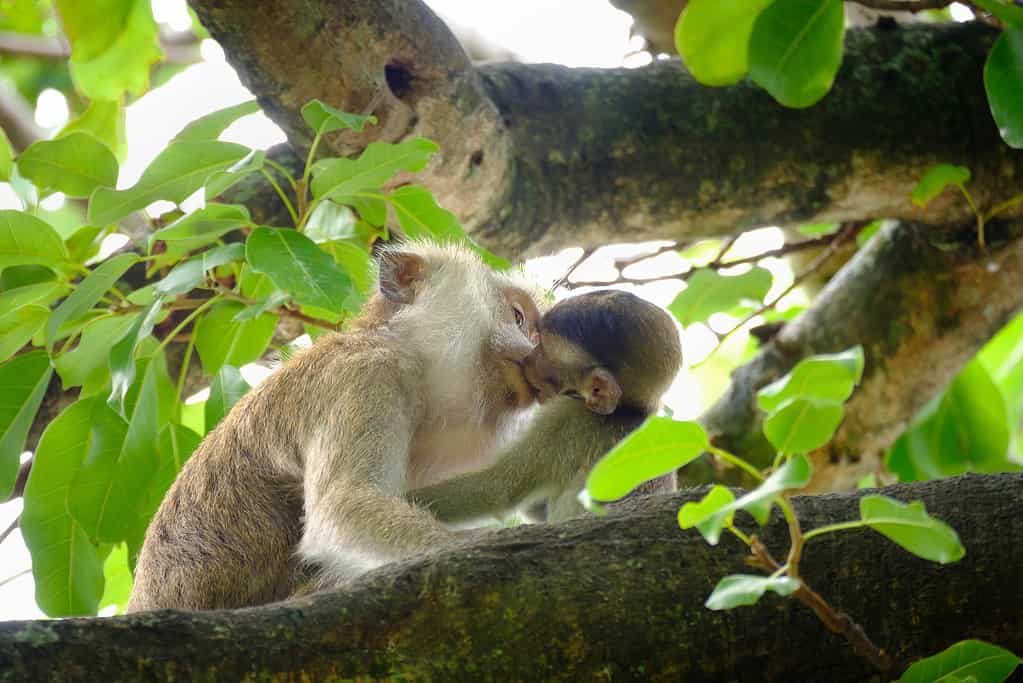
Mother monkeys often kiss their babies to show their affection.
©HearttoHeart0225/iStock via Getty Images
In mother-infant relationships, gentle touching and kissing are processed by C-tactile nerve fibers. This type of touch reduces stress and actually promotes synapses within the infants’ brains to make strong connections in both humans and monkeys.
When mother monkeys kiss their babies, they are actually enhancing the infants’ psychological, cognitive, social, and emotional growth and development. They are also regulating stress responses in their babies while showing affection.
Scientists believe that this type of affection-related behavior may have evolutionary roots in primates since the sense of touch is one of the first senses to develop before an infant is even born. Kissing allows mothers to get close to their babies and smell them, feel them, and see them up close.
Is Kissing a Romantic Gesture in Monkeys?

Monkeys often look as though they’re kissing in a passionate way
©Amanda Coetzee/iStock via Getty Images
When it comes to primates, most monkeys and apes don’t appear to kiss romantically. The pressing of one’s mouth to another’s resembles a more platonic kind of behavior. In all fairness, though, Darwin’s and some more contemporary evolutionary psychologists’ research shows that romantic kissing is not universal in humans either. In fact, only about 40% of cultures that were studied used kissing as an expression of romance.
However, there is a primate group aside from humans that does seem to kiss in a romantic manner. The bonobos, a species of ape very similar to chimpanzees, do actually kiss. Not only that, they use their tongues to, as we humans say, “French kiss.”
There’s Something About Those Bonobos

Bonobos, who are slightly darker, smaller, and generally more peaceful than chimpanzees, will mate facing each other.
©Jeff McCurry/iStock via Getty Images
Monkeys and most apes will engage in lip-smacking behaviors that often end with decorous lip-to-lip contact. These behaviors, though they may have some sexual motivation, are typically considered to be friendly or social interactions.
While these other monkeys and apes usually have pretty straightforward copulation, bonobos have a different way of mating. Unlike other apes, bonobos have non-reproductive sex often. Moreover, they mate face-to-face.
Bonobos and chimpanzees both share almost 99% of their DNA with humans. Bonobos are more like humans in their mating and relationships than chimpanzees. Moreover, they are unlike chimps and humans in that they don’t kill each other or other animals. Sadly, bonobos are endangered and face an extremely high risk of extinction in the near future.
Monkey See, Monkey Do?
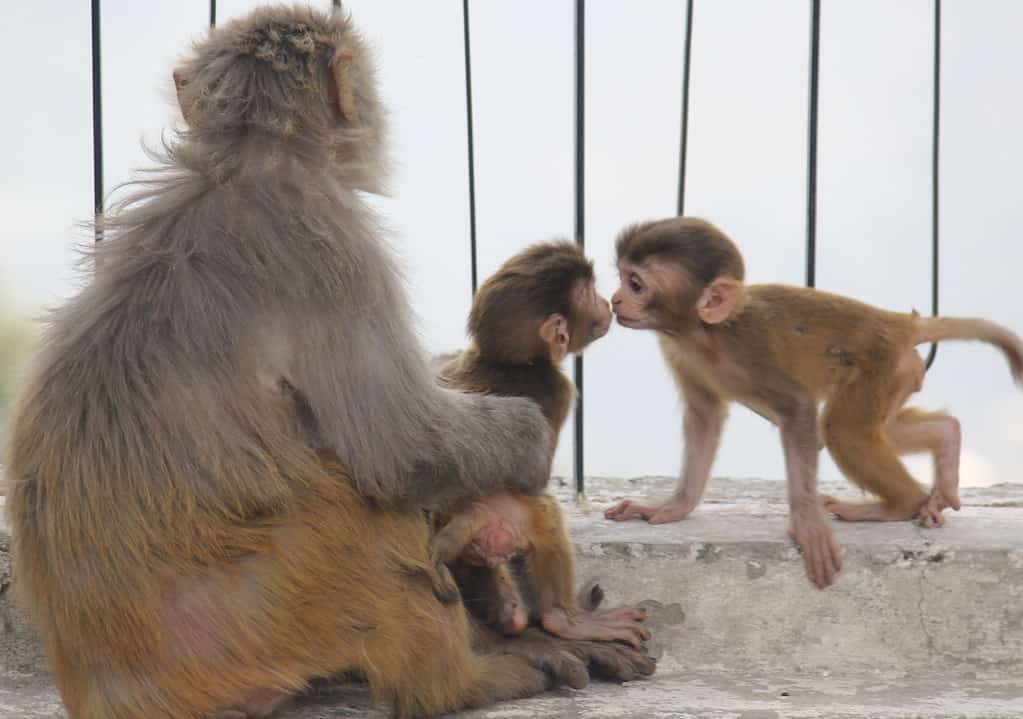
Monkeys may learn kissing behaviors by the affection their mothers give them.
©ayushi09/iStock via Getty Images
Some scientists believe that kissing is a behavior that has evolved from a more maternal behavior. Primate mothers often chew food for their babies before giving it to them to eat. Most humans just give their babies pureed food, but some primates don’t have that luxury still.
Other scientists believe it’s an evolutionary behavior that has helped female primates choose their partners. In other words, females can smell the pheromones on their partners when kissing them. The chemical reactions — the release of oxytocin, dopamine, serotonin, and endorphins — have physiological roots.
All that said, there still may be some validity to the idea of kissing being a learned behavior. For one thing, most animals don’t kiss in the way humans think of kissing. Secondly, not even all humans kiss. Since monkeys, apes, and humans are social creatures with mothers who raise their babies for longer than most other animals, it makes sense that kissing could be a learned behavior.
More Photos of Monkeys (and Apes) Kissing

A family of vervet monkeys share affection.
©Anarcadian/iStock via Getty Images
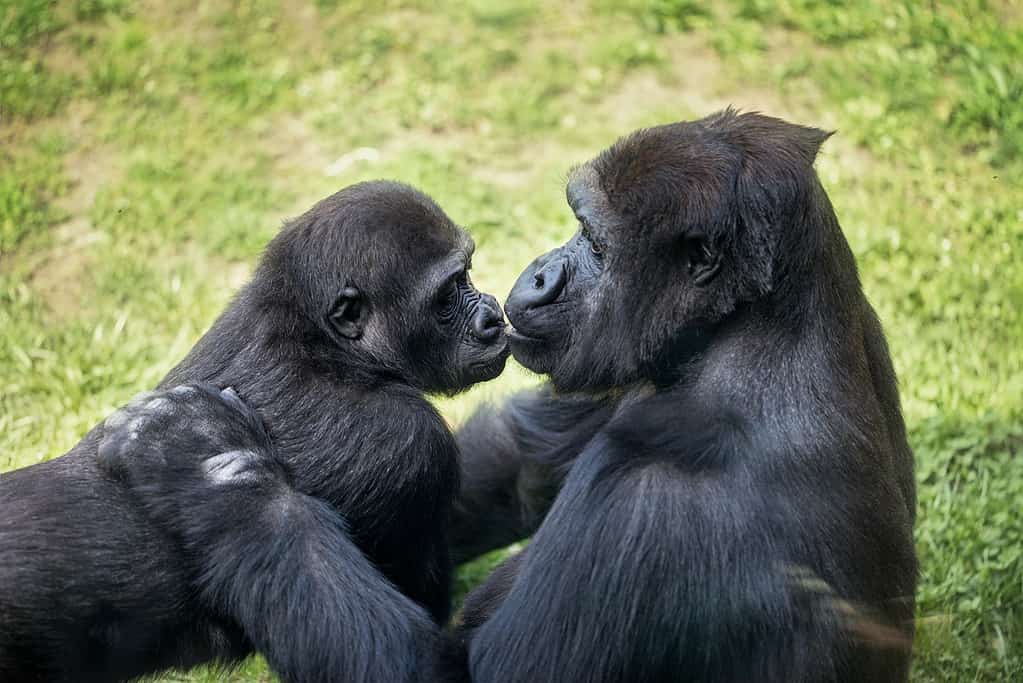
A mother
gorilla
kisses her baby.
©LuckyBusiness/iStock via Getty Images
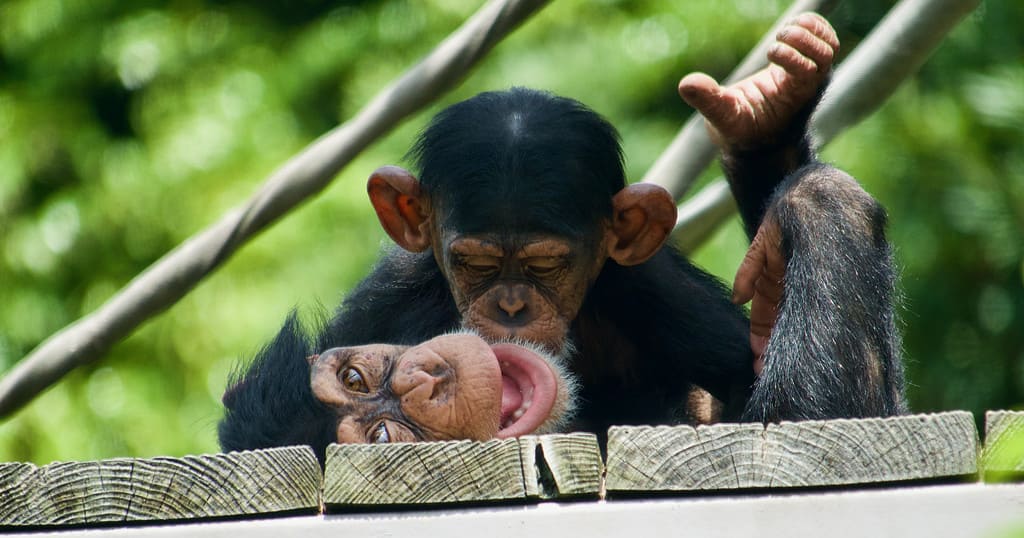
A baby
chimpanzee
kisses another young chimpanzee.
©George Melin/iStock via Getty Images
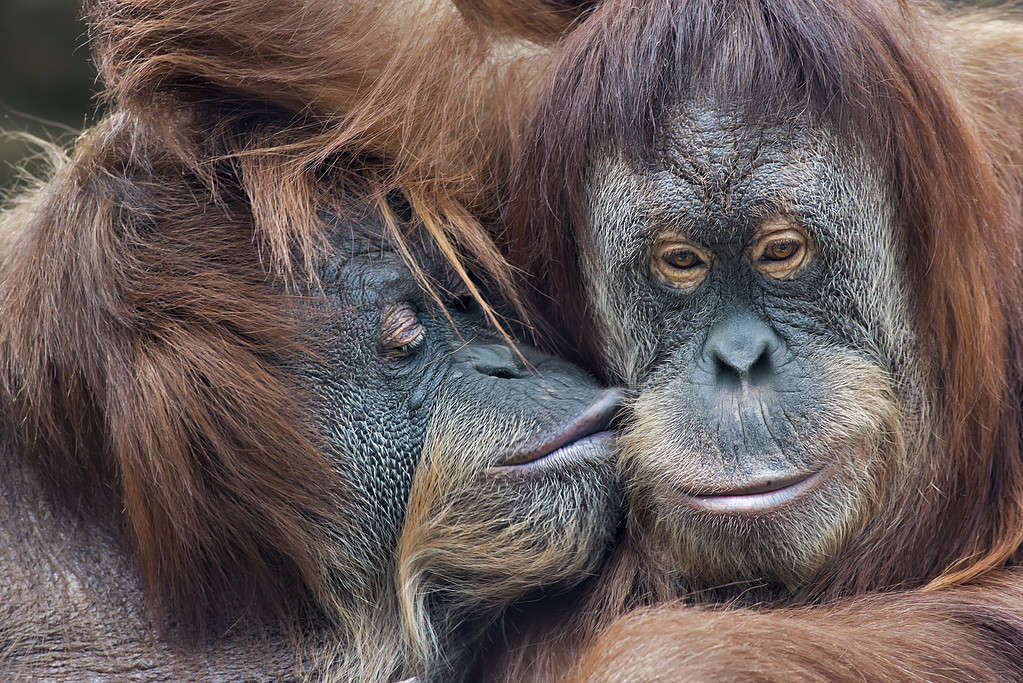
A mother
orangutan
kisses her adult daughter.
©olga_gl/iStock via Getty Images
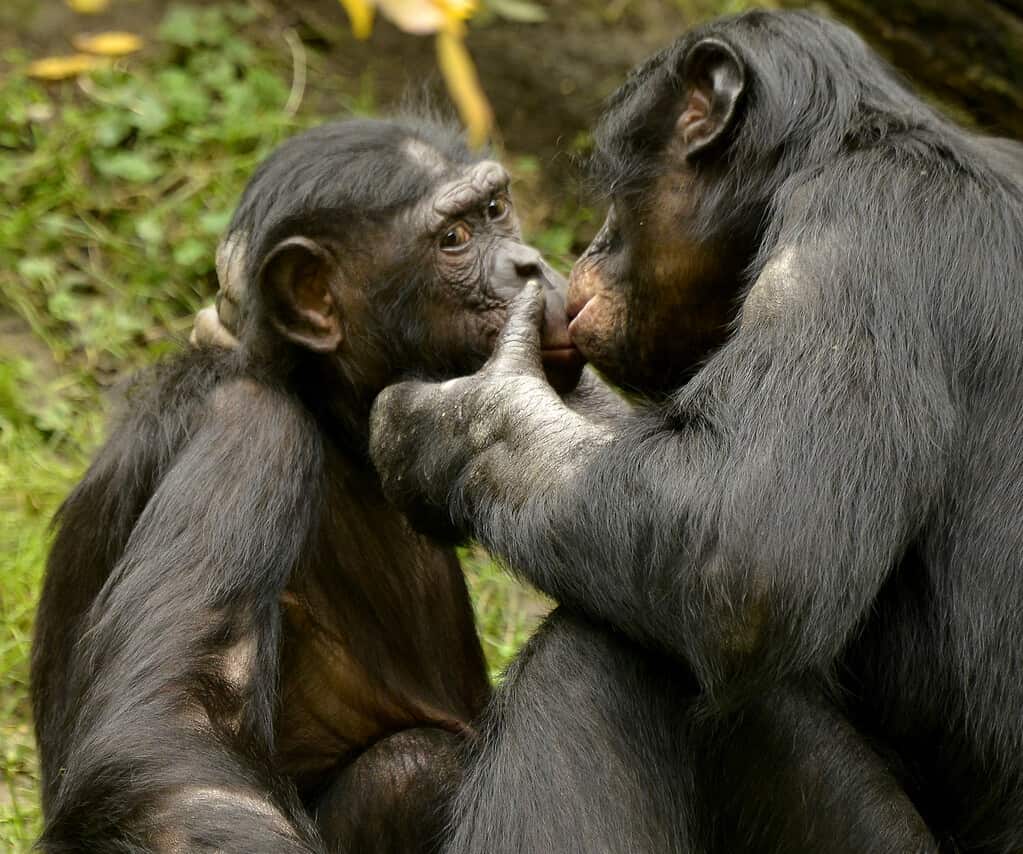
A bonobo family shares an affectionate kiss.
©Jeff McCurry/iStock via Getty Images
The photo featured at the top of this post is © folewu/iStock via Getty Images
Thank you for reading! Have some feedback for us? Contact the AZ Animals editorial team.







